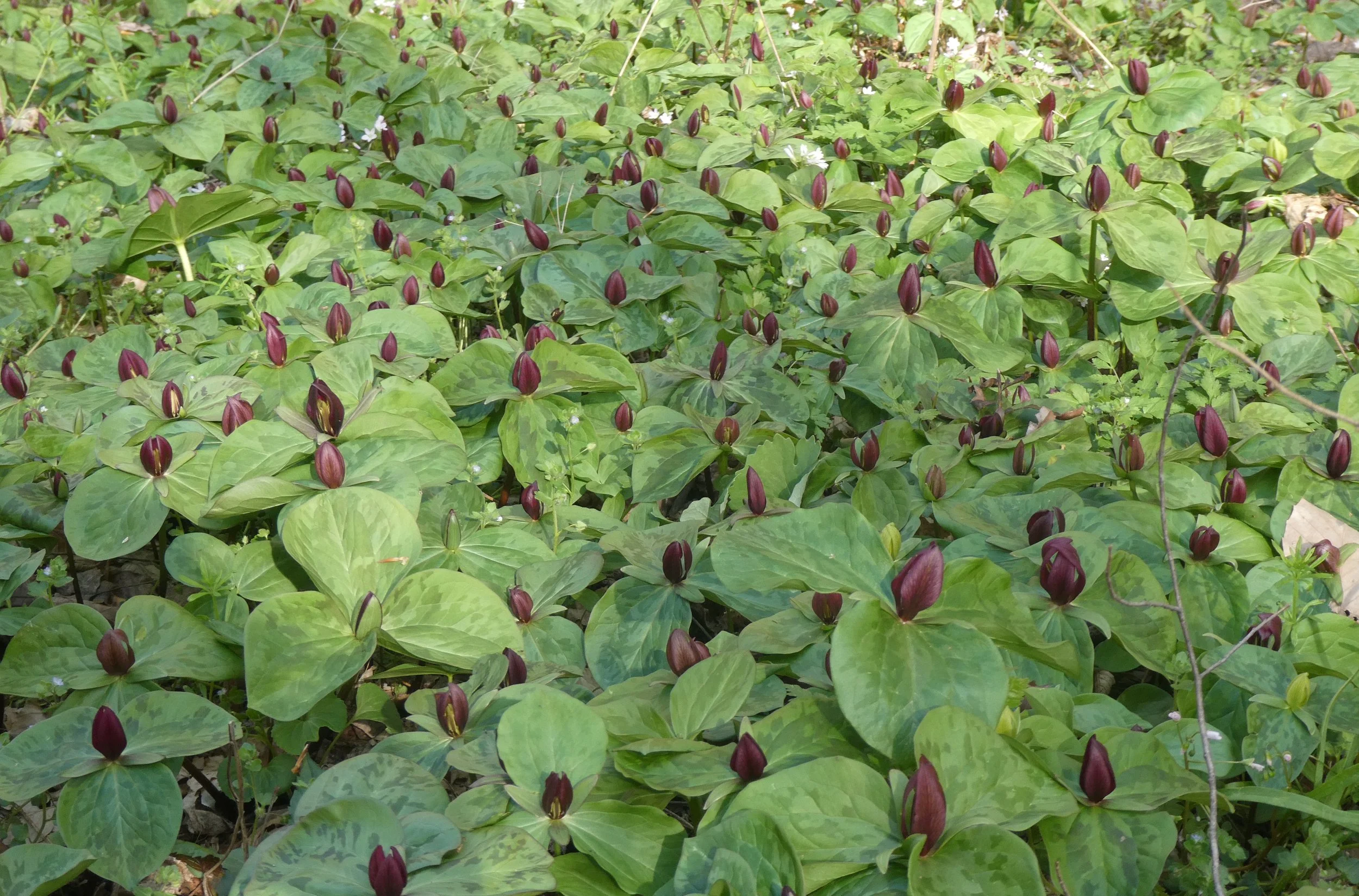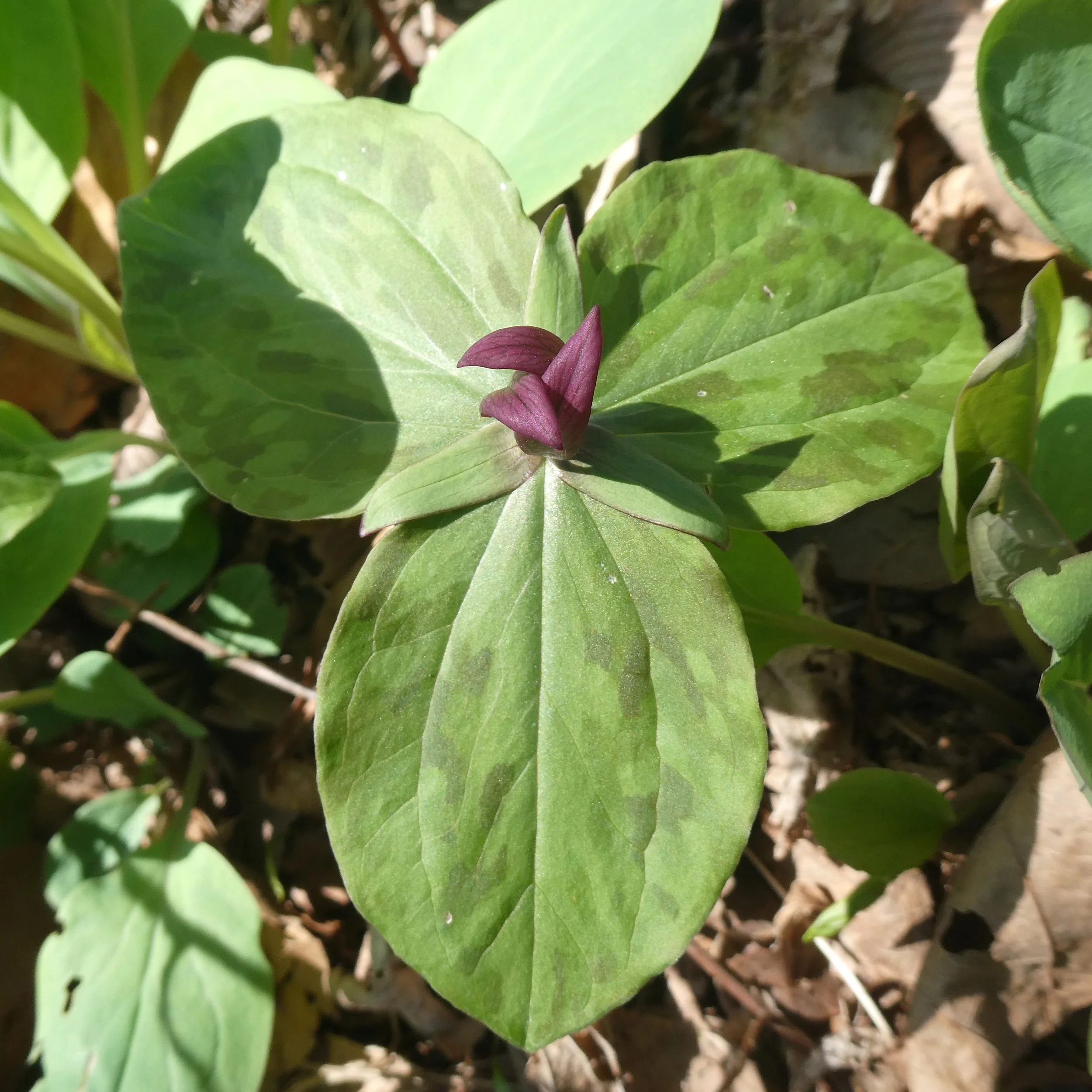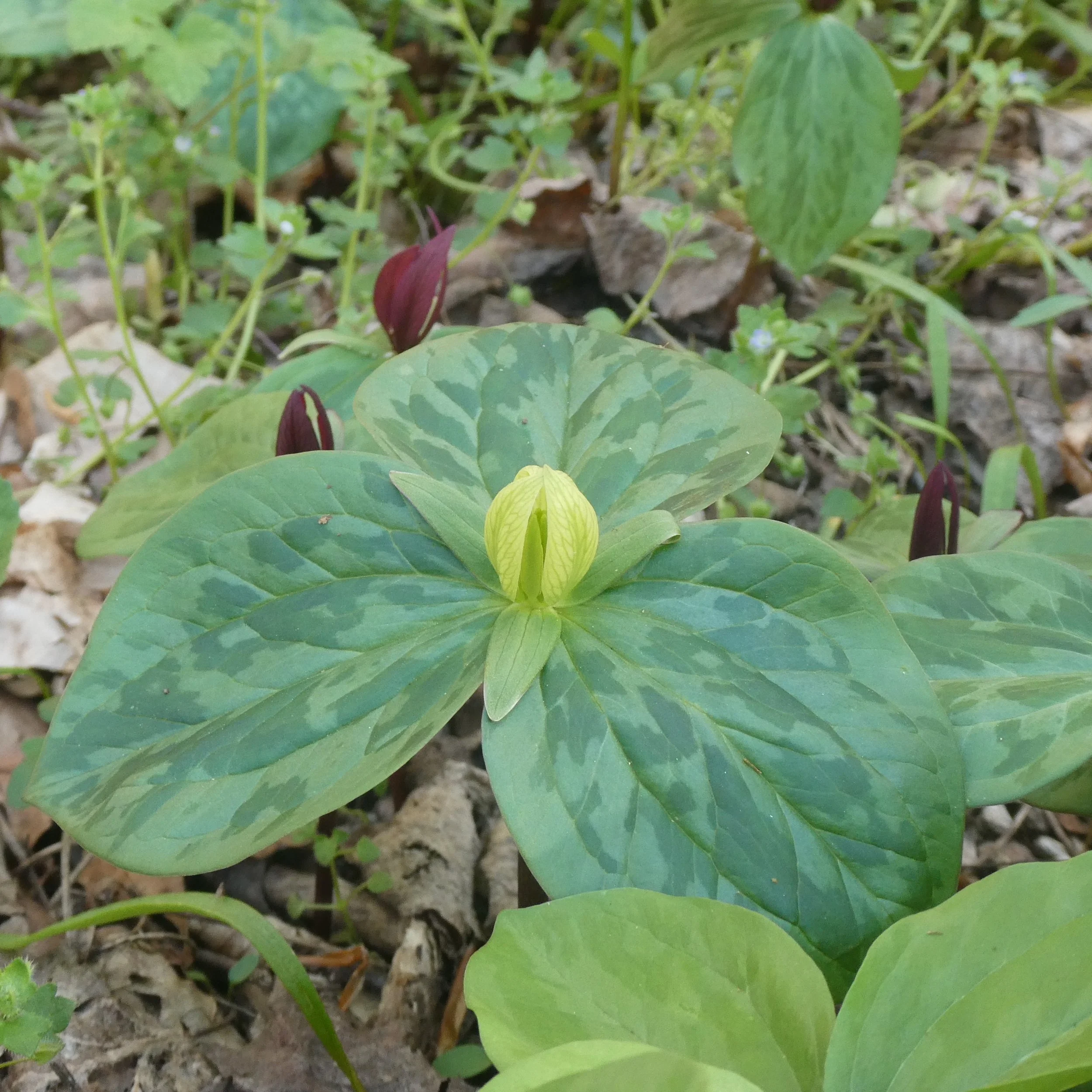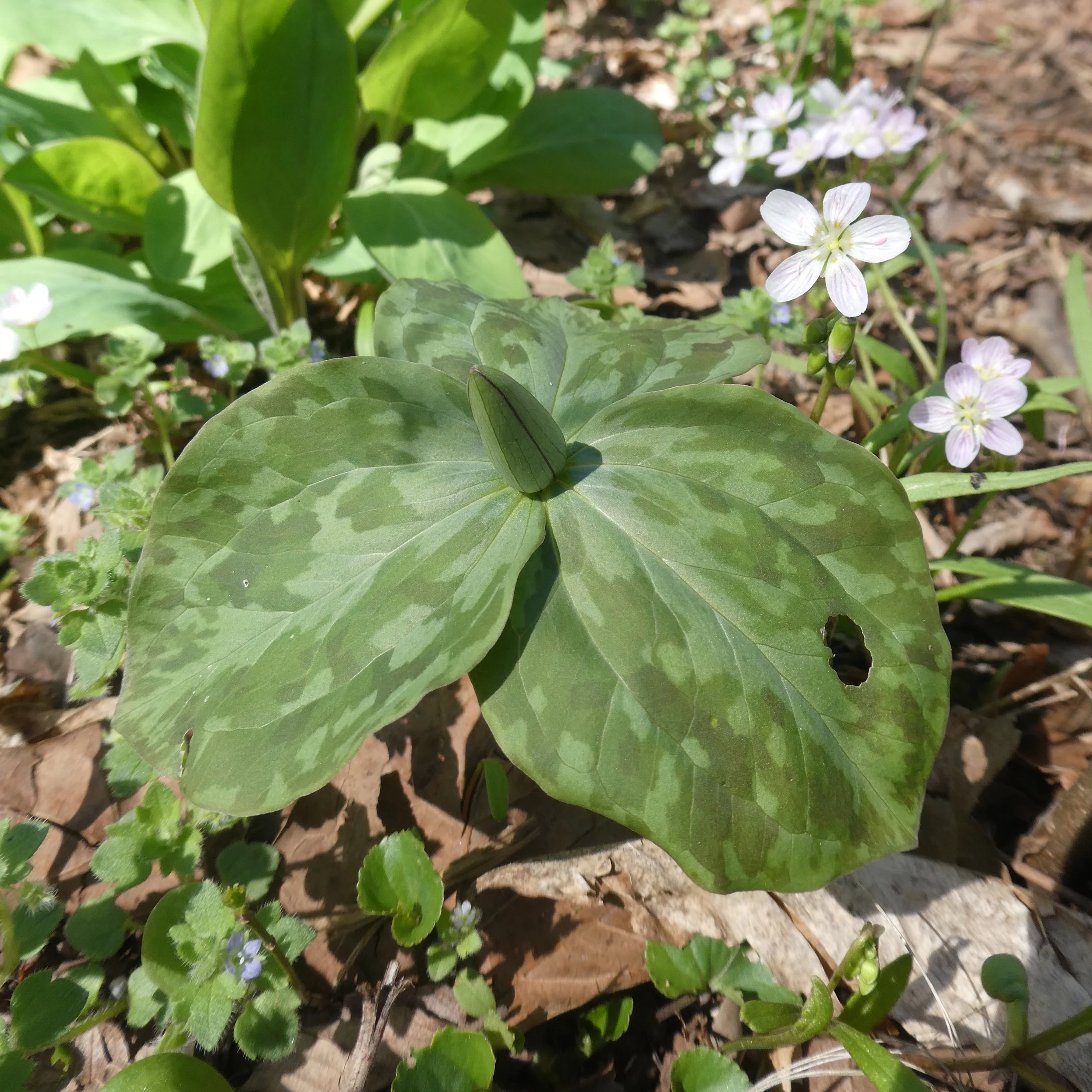Plant of the Week 5: Toadshade (Trillium sessile)
Toadshade, also known as Sessile Trillium, Toad Trillium, or Sessile-Flowered Wake Robin, is one of 38 species of Trillium native to the United States. It is an attractive, low growing perennial that can form large patches over time due to its rhizomes (underground stems that spread horizontally). The name Trillium comes from the Latin word “tri” as the leaves and flower petals come in sets of 3.
The stemless flowers usually reach a height of 2 inches and have a deep maroon, burgundy, or brown color. Although uncommon, flowers can also be yellow or green. They emit an unpleasant (sometimes musky) odor that is useful in attracting beetles and flies for pollination. Bloom time occurs in early-spring, from the end of March to early May.
Trillium sessile leaves come in groups of 3 and can reach lengths of up to 4 inches with blunt tips. Each leaf is green and usually mottled with brown, purple, or white. Leaves will die to the ground and the plants will go dormant by mid-summer.
The natural habitat of Toadshade is along stream and river banks or in deciduous woodlands that are moist and nutrient rich. They are also adapted to calcareous or limestone soils that have some alkalinity. In the Washington metro area, Toadshade is most frequent along the Potomac River, on both the Maryland and Virginia side. It is especially abundant at Riverbend Park (VA), Scotts Run Nature Preserve (VA), and Bear Island along the C&O Canal (MD). There are several similar species (Trillium cuneatum in the Mid-Atlantic) that can make identification difficult.
At home, use Toadshade in many woodland settings as a spring groundcover. It looks great when mixed with other spring wildflowers but is also nice when massed. If planting a large colony, be sure to plant other species nearby to fill the space when it goes dormant. Buying live plants is usually better than planting seeds, as trilliums are notorious for having long germination times. Seeds can take two years to sprout and it can take up to several years for a trillium seed to flower.






